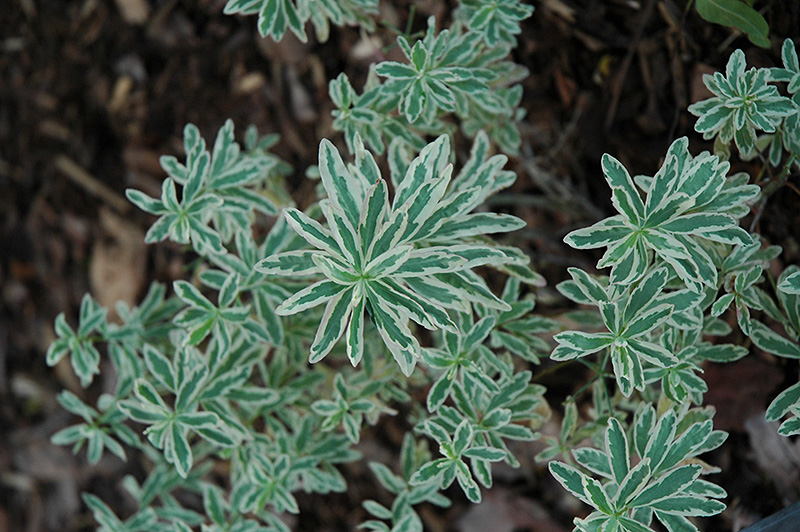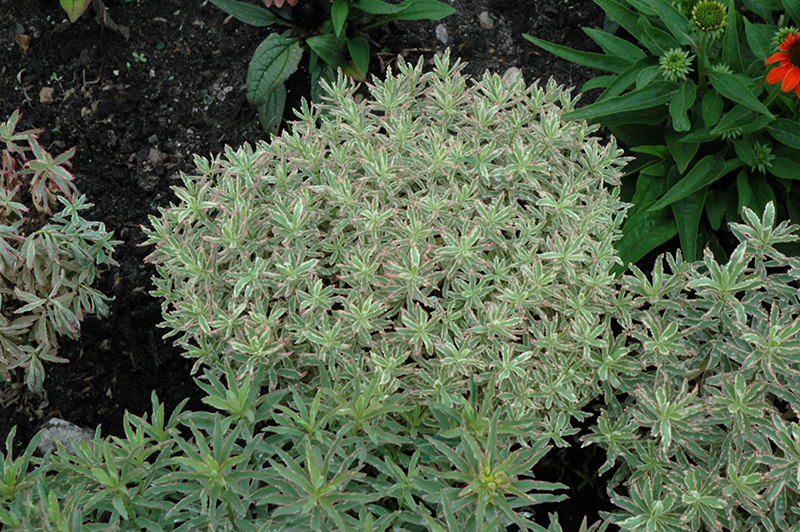First Blush Euphorbia
Euphorbia polychroma 'First Blush'
Height: 12 inches
Spread: 18 inches
Sunlight:
![]()
![]()
Hardiness Zone: 3
Other Names: Cushion Spurge
Ornamental Features
First Blush Euphorbia has masses of beautiful cymes of yellow flowers with chartreuse bracts at the ends of the stems from mid to late spring, which are most effective when planted in groupings. Its attractive narrow leaves emerge rose in spring, turning green in color with showy white variegation and tinges of pink. As an added bonus, the foliage turns a gorgeous brick red in the fall.
Landscape Attributes
First Blush Euphorbia is an herbaceous perennial with a mounded form. Its medium texture blends into the garden, but can always be balanced by a couple of finer or coarser plants for an effective composition.
This is a relatively low maintenance plant, and should only be pruned after flowering to avoid removing any of the current season's flowers. Deer don't particularly care for this plant and will usually leave it alone in favor of tastier treats. It has no significant negative characteristics.
First Blush Euphorbia is recommended for the following landscape applications;
- Mass Planting
- Border Edging
- General Garden Use
Planting & Growing
First Blush Euphorbia will grow to be about 12 inches tall at maturity, with a spread of 18 inches. It grows at a medium rate, and under ideal conditions can be expected to live for approximately 10 years. As an herbaceous perennial, this plant will usually die back to the crown each winter, and will regrow from the base each spring. Be careful not to disturb the crown in late winter when it may not be readily seen!
This plant does best in full sun to partial shade. It is very adaptable to both dry and moist growing conditions, but will not tolerate any standing water. It is not particular as to soil pH, but grows best in sandy soils. It is somewhat tolerant of urban pollution. This is a selected variety of a species not originally from North America, and parts of it are known to be toxic to humans and animals, so care should be exercised in planting it around children and pets. It can be propagated by cuttings; however, as a cultivated variety, be aware that it may be subject to certain restrictions or prohibitions on propagation.

